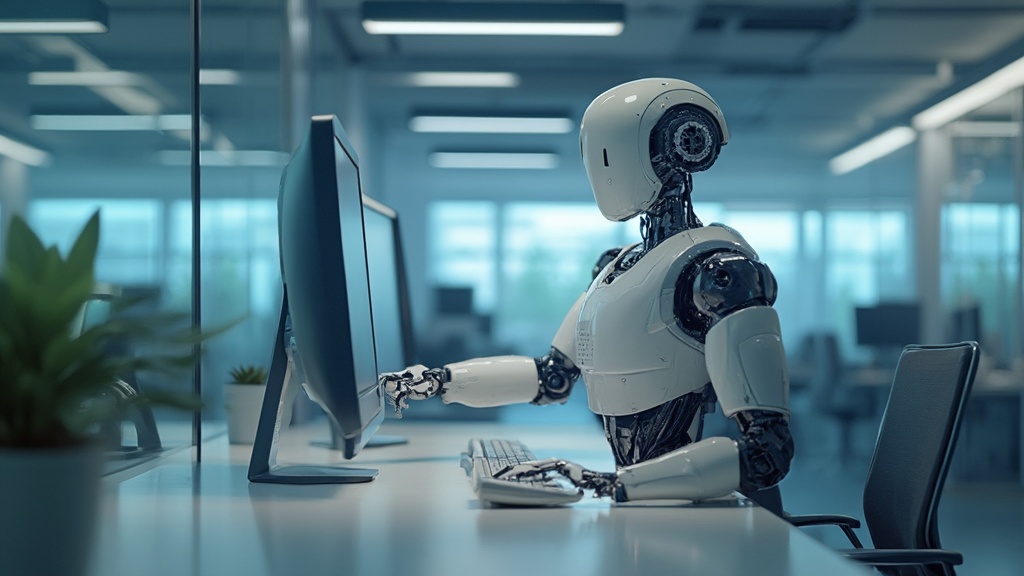Introduction
Robotic Process Automation (RPA) is transforming industries by automating repetitive, rule-based tasks with software robots, or ‘bots.’ These bots interact with various applications to perform functions traditionally handled by humans, such as data entry and transaction processing. The benefits of RPA are substantial, ranging from increased operational efficiency and cost savings to improved accuracy and compliance.
By reducing human error and speeding up workflows, RPA enables businesses to optimize their operations and focus on strategic initiatives.
This article delves into how RPA works, its key benefits across different industries, and the challenges that organizations may encounter during its implementation. It also explores the future of RPA, particularly its integration with Artificial Intelligence (AI) and Intelligent Process Automation (IPA), which promises to automate even more complex tasks and drive further innovation. Discover how RPA can be a game-changer for your organization, offering practical solutions to streamline processes and enhance productivity.
What is Robotic Process Automation?
Robotic Process Automation (RPA) utilizes software robots, or ‘bots,’ to automate repetitive, rule-based activities traditionally managed by humans. These bots engage with different applications and systems in a manner similar to a human, performing activities such as data entry, processing transactions, and managing records.
One of the primary benefits of RPA is the significant increase in operational efficiency it brings. For instance, software bots can carry out repetitive activities at a much faster pace than humans, without the need for breaks or rest. This efficiency was demonstrated by St. James Winery, which achieved higher production speeds and better margins after implementing RPA, measuring their return on investment in terms of labor per case.
RPA also offers substantial cost savings. Companies can lower labor expenses as the software manages activities that would otherwise necessitate extra personnel. Moreover, RPA can work 24/7, eliminating the need for overtime pay or temporary staff during peak seasons. This was the situation for MMCI, a company specializing in material handling and warehouse efficiency, which has leveraged RPA to improve performance and increase productivity.
Improved accuracy is another key advantage of RPA. Human errors can be costly, leading to financial losses and customer dissatisfaction. RPA greatly lowers the likelihood of mistakes in activities like information input and report creation, thereby improving the overall quality of work. ‘According to Aston University, innovations in automation, large information sets, and intelligent systems can enable automated information collection, creating real-time, information-driven dashboards to further enhance accuracy and efficiency.’.
In summary, RPA is designed to enhance efficiency by reducing human error and increasing speed, making it an essential tool for businesses looking to optimize their operations and stay competitive.
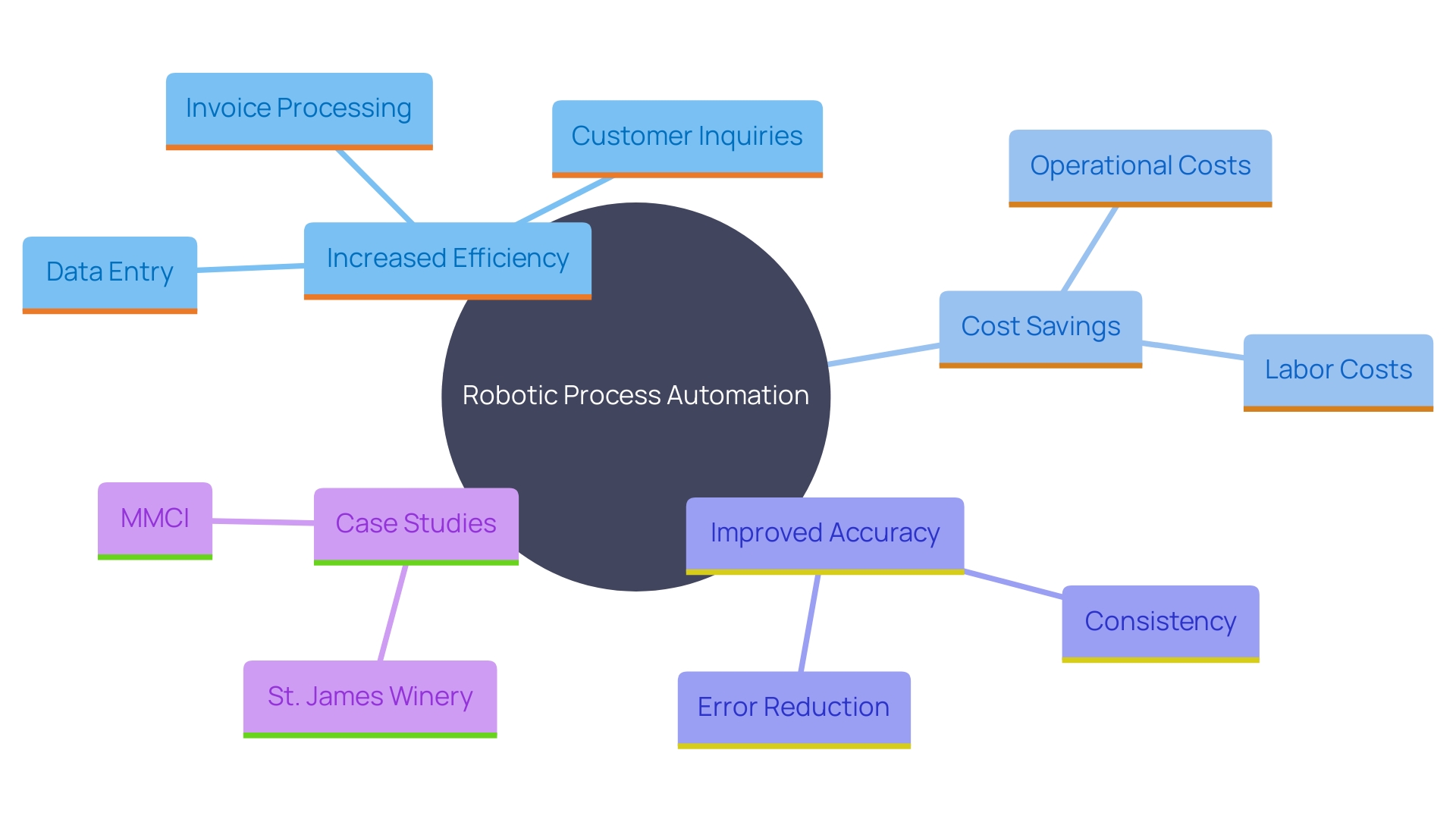
How RPA Works
Robotic Process Automation (RPA) functions by replicating human actions within digital environments. It utilizes a combination of user interface interactions, APIs, and information scraping to execute tasks across various software applications. For example, RPA bots can engage with applications by clicking buttons, entering information, extracting details, and navigating between various systems, much like a human user would.
RPA bots follow predefined workflows or rules, enabling them to manage structured information with high accuracy. This technology is designed to integrate seamlessly with existing systems, eliminating the need for significant changes. Consequently, RPA is highly adaptable and scalable, making it ideal for diverse business environments.
An example of advanced RPA technology is SmartFlow, which utilizes pre-trained large language models (LLMs) and deep-learning-based image understanding. SmartFlow can adjust to new situations, including changes in the user interface and variations in input information, without human intervention. It employs computer vision and natural language processing to understand visible elements on the graphical user interface (GUI) and convert them into textual representations. These representations are then utilized by LLMs to produce a series of actions that a scripting engine carries out to accomplish designated assignments.
The effectiveness of SmartFlow has been demonstrated through evaluations on a dataset of generic enterprise applications with diverse layouts. These evaluations highlight SmartFlow’s robustness across different layouts and applications, showcasing its ability to handle varying scenarios effectively.
Incorporating RPA into business processes offers numerous benefits, such as improved accuracy and efficiency. RPA can operate around the clock, removing the necessity for overtime compensation or temporary personnel during busy periods, and significantly decreasing human mistakes in activities such as data entry and report creation. This increased accuracy not only saves money but also enhances the overall quality of work, positioning RPA as a valuable asset for any organization looking to optimize its operations.
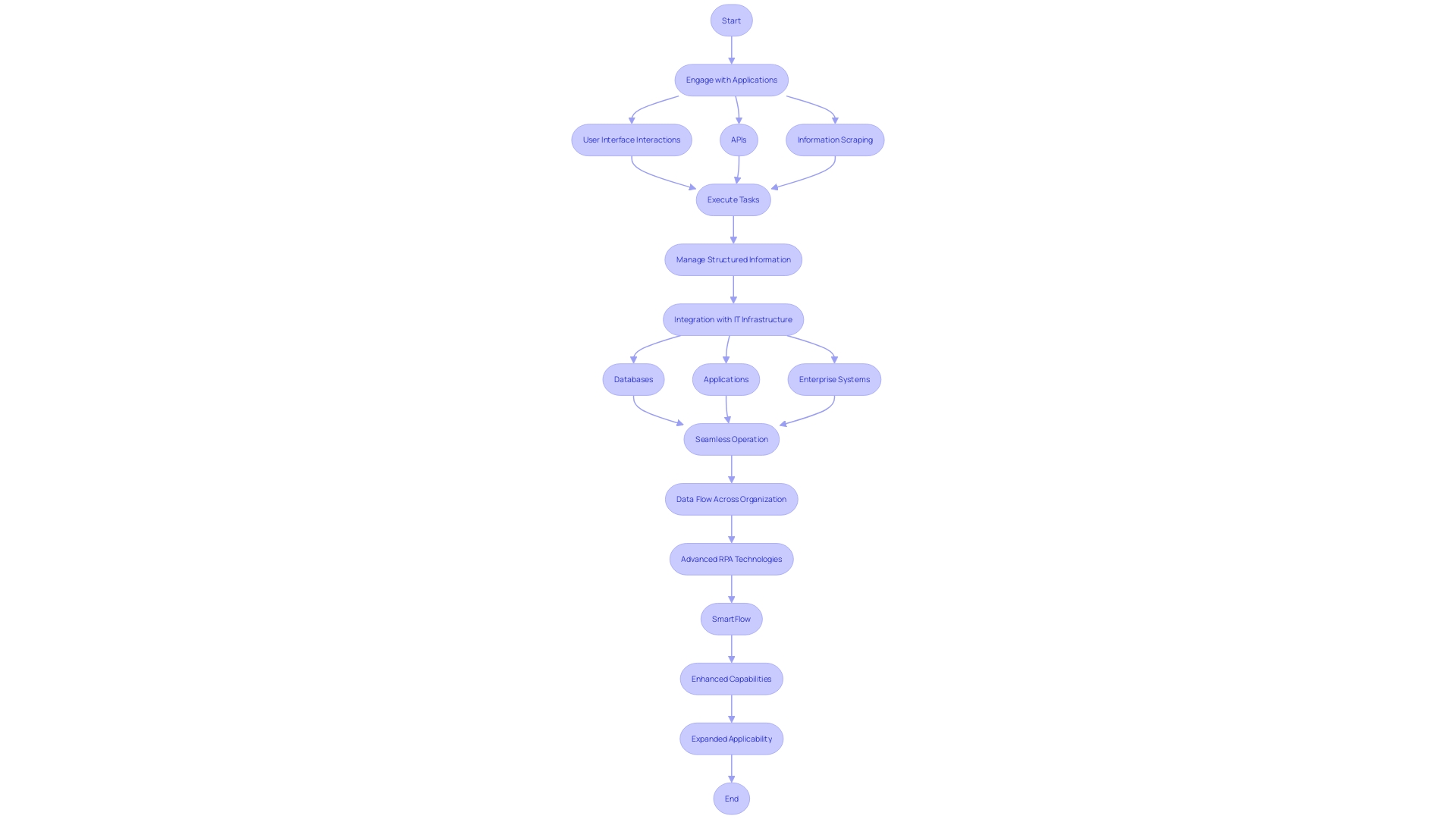
Benefits of Implementing RPA in Business
Implementing Robotic Process Automation (RPA) brings a multitude of benefits, such as enhanced operational efficiency, improved accuracy, and notable cost reductions. By automating repetitive tasks, organizations can reallocate human resources to focus on strategic initiatives and innovative projects. This shift not only fosters growth but also keeps employees engaged in more meaningful work. For instance, St. James Winery, a leading wine producer in St. James, MO, saw higher production speeds and better margins after implementing automated processes, showing tangible ROI in terms of labor per case.
Moreover, RPA’s consistent adherence to established protocols enhances compliance and reporting capabilities. The bots maintain detailed logs of their activities, ensuring that every step follows the required guidelines. As per a study conducted by the Federal Reserve Bank of Atlanta, 54.7% of businesses plan to lower labor expenses via AI in the upcoming year, motivated by the precision and productivity enhancements that mechanization provides. These enhancements also relate to controlled pricing pressures, as mechanization aids in managing input expenses and staff salaries.
In addition, RPA’s role in business processes is not entirely hands-off; continuous monitoring, management, and upgrades are essential. Automation has evolved from early mechanical innovations to sophisticated digital solutions, yet it remains a partnership between technology and human oversight. The incorporation of RPA into high-volume, repetitive processes allows for substantial efficiency gains, while more complex tasks may benefit from Intelligent Automation, which adds cognitive abilities to the integration mix.
In summary, the strategic implementation of RPA can lead to improved operational metrics, cost savings, and enhanced compliance, making it an invaluable tool in modern business operations.
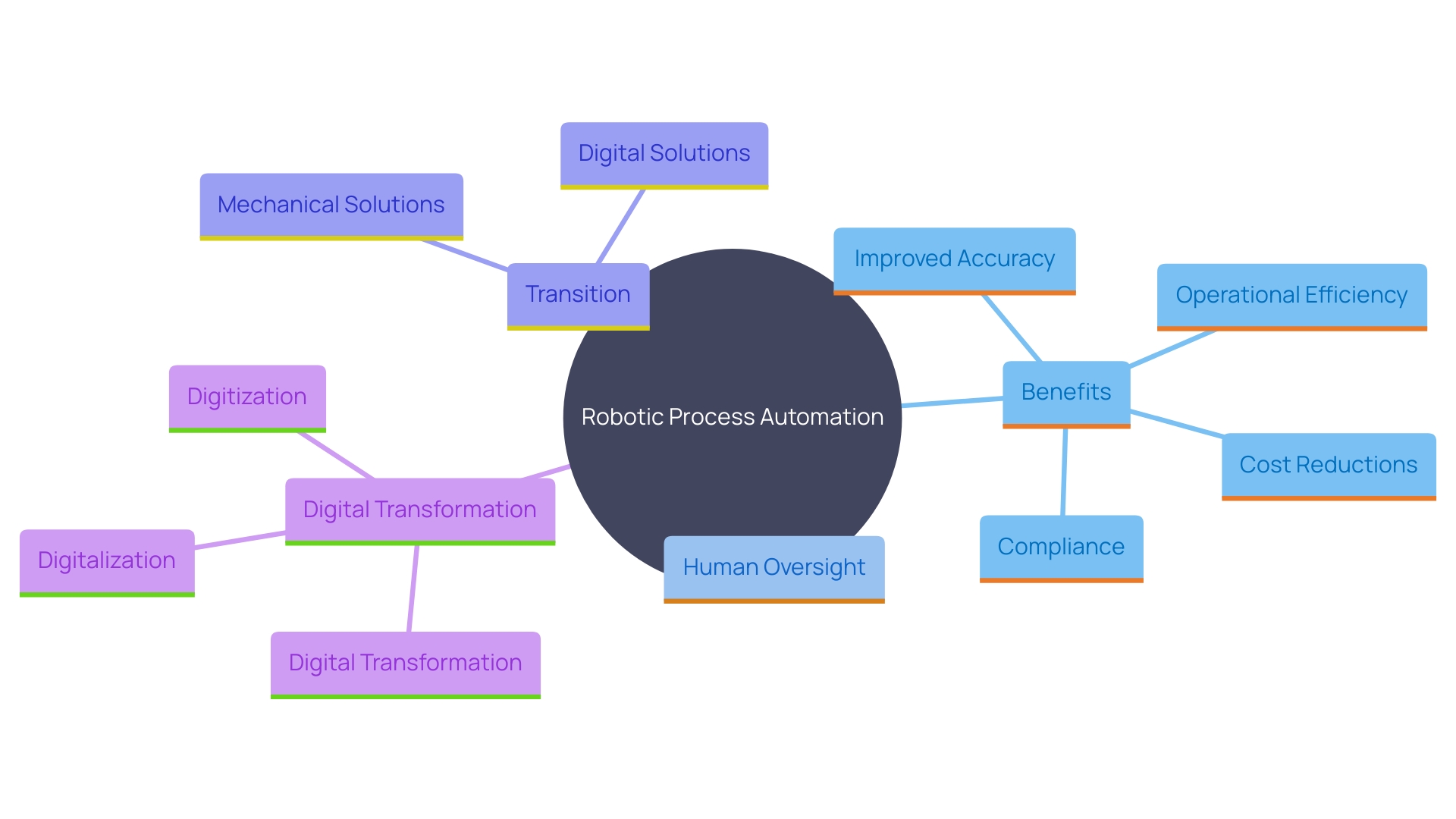
Key Industries Benefiting from RPA
Robotic Process Automation (RPA) is revolutionizing various industries, notably finance, healthcare, manufacturing, and retail. In finance, companies like Capital One utilize RPA to enhance efficiency in processes such as invoice processing and account reconciliation. Capital One’s dedication to digital transformation is clear through its extensive use of Slack for collaboration, affecting over 50,000 employees. In the same way, Market Financial Solutions utilizes marketing technology to simplify operations and boost customer inquiries, emphasizing the wider financial industry’s acceptance of automated processes.
Healthcare is another field greatly gaining from RPA, with 93% of hospitals utilizing workflow processes to handle patient information and scheduling more efficiently. This transition not only improves operational efficiency but also enhances patient care by reducing manual errors.
In manufacturing, RPA is employed for inventory management and quality control. Companies gain granular, real-time visibility into their processes, enabling better decision-making and faster responses to operational challenges. This visibility is crucial for maintaining high standards in production and ensuring timely fulfillment of orders.
Retail businesses are also leveraging RPA to streamline order processing and enhance customer service interactions. Automated systems can handle customer inquiries and process orders more efficiently, freeing up staff to focus on more strategic tasks. For instance, automated tools can recognize trends and suggest solutions, enabling teams to dedicate more time to customer engagement and less on manual data entry.
By continuously observing and recording outcomes, organizations can enhance their strategies, ensuring ongoing advancements in efficiency and productivity across all sectors.
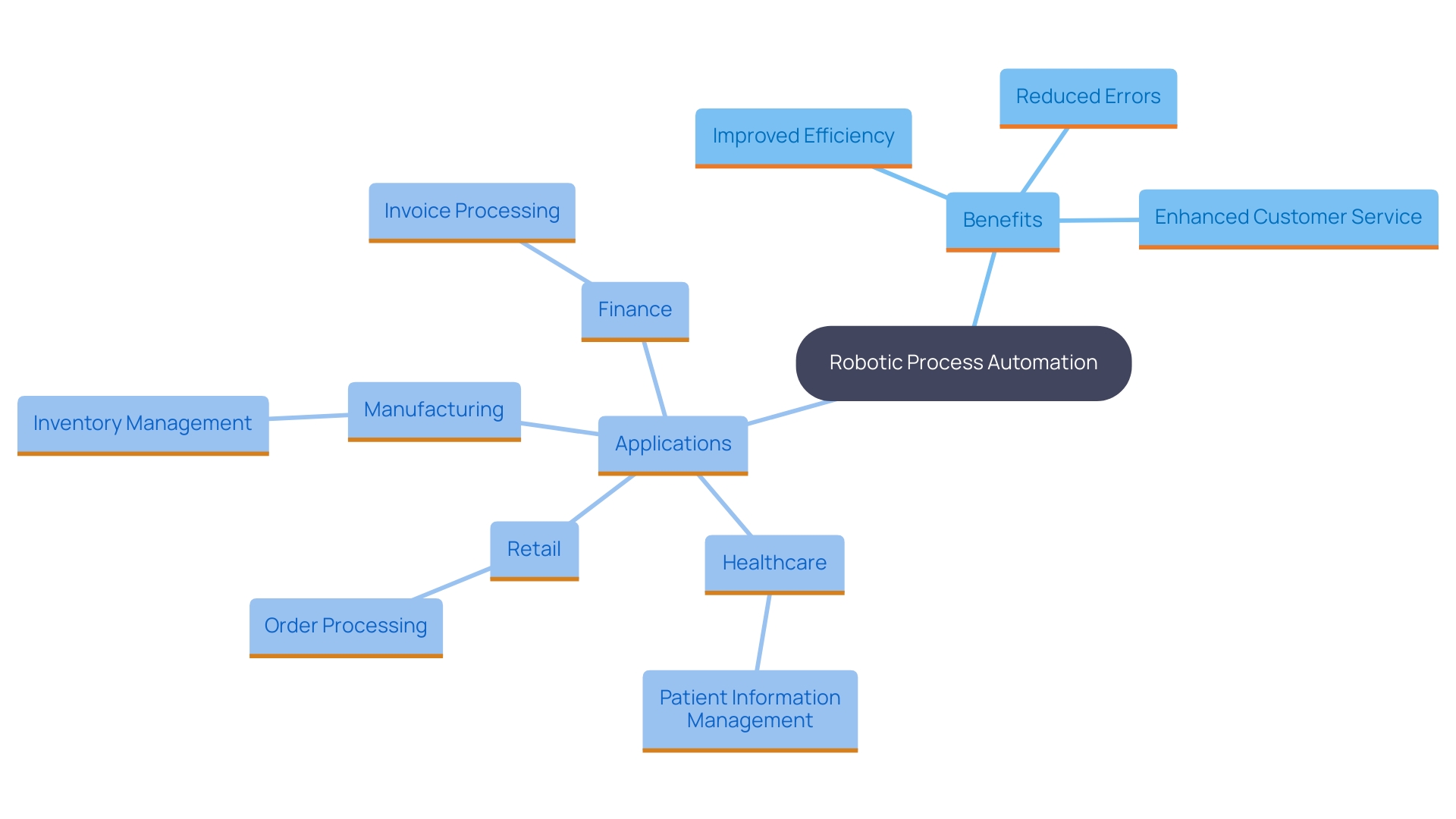
Challenges and Considerations for RPA Adoption
While RPA offers substantial advantages, organizations may face challenges during its adoption. Common obstacles include resistance from employees, inadequate training, and the need for robust change management strategies. For example, the RESEA program in California found that about a third of participants did not attend the initial session despite the program’s clear benefits. This highlights the importance of addressing mental models and friction points that hinder acceptance.
To overcome these hurdles, businesses should focus on upskilling their workforce to complement new technological systems. According to a Deloitte survey, 90% of executives are placing more importance on training, with more than half focusing on skills-based hiring in 2024. Companies like Nets have successfully transitioned from traditional face-to-face training to more flexible and timely approaches, ensuring employees are well-prepared for new responsibilities.
Moreover, continuous improvement is key. Hyperautomation, which combines RPA with AI, should be seen as a journey rather than a one-time project. Regularly monitoring and refining processes can maximize benefits and keep the workforce engaged.
Investing in the right tools and fostering a culture of acceptance are also crucial. For instance, the rapid deployment of an RPA bot by HUD to automate housing contract monitoring showcased how quickly and efficiently RPA solutions can be implemented, even within complex procurement and regulatory environments. This not only improved operational resilience but also set a precedent for future technology adoption.
By addressing these challenges head-on and providing the necessary resources and support, businesses can ensure the successful implementation of RPA and unlock its full potential.
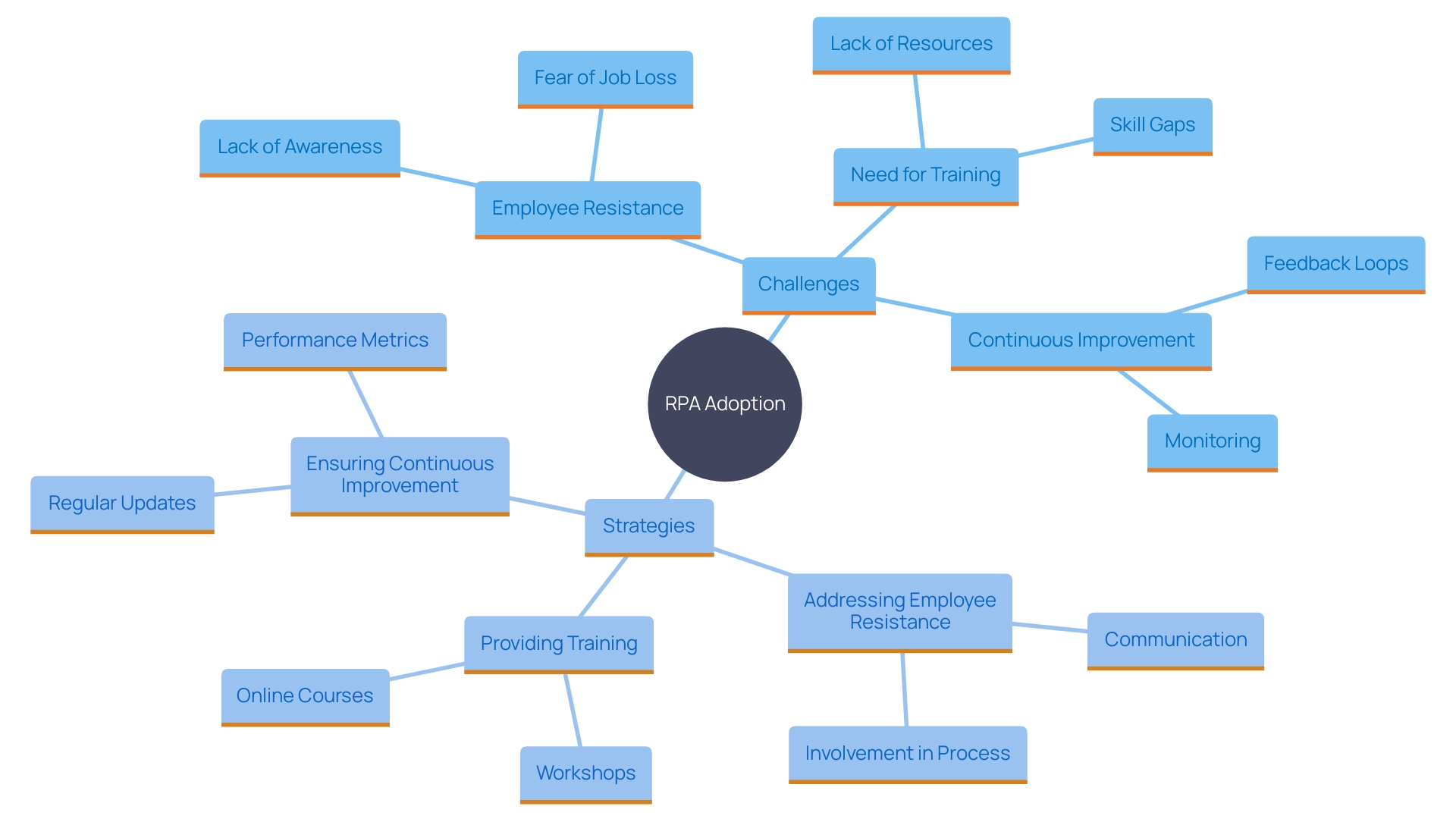
The Future of RPA: Integration with AI and IPA
The future of RPA lies in its integration with Artificial Intelligence (AI) and Intelligent Process Automation (IPA). This evolution will enable organizations to automate more complex activities that require cognitive abilities, such as decision-making and problem-solving. By combining RPA with AI, businesses can unlock greater insights from their information, enhance automation capabilities, and drive innovation in their operations.
Picture a group of AI workers collaborating to perform requests made by users, utilizing personalized information and engaging with the most essential applications. To realize this vision, Lindy required to incorporate a large network of applications and services to allow their AI assistants to carry out functions efficiently. The complexity and breadth of these integrations presented a significant challenge. Developing them from scratch would require extensive research, planning, and development time, and threatened to extend the timeline to a full year. This would have significantly delayed Lindy’s market entry or reduced its range of available activities at launch. Lindy chose n8n to overcome this challenge.
Fast-forward to today, and the meshing of RPA with AI technology—hyperautomation, or the marriage of multiple automation capabilities—has opened a whole new world of automation. Much of the pre-AI trouble with RPA comes down to the complexity or variability of seemingly simple activities. For example, say you want a bot to analyze invoices and send them to the right contacts at your organization. Seems simple enough, right? Think again. Before the bot can manage the job, you’d need to standardize every invoice, or you’d have to program the bot to know how to handle dozens of different document variations.
In this context, we present SmartFlow, an AI-based RPA system that uses pre-trained large language models (LLMs) coupled with deep-learning based image understanding. Our system can adapt to new scenarios, including changes in the user interface and variations in input data, without the need for human intervention. SmartFlow uses computer vision and natural language processing to perceive visible elements on the graphical user interface (GUI) and convert them into a textual representation. This information is then utilized by LLMs to generate a sequence of actions that are executed by a scripting engine to complete an assigned objective. Our evaluations on this dataset demonstrate that SmartFlow exhibits robustness across different layouts and applications.
The choice between the two depends on the specific requirements of an organization, balancing the need for efficiency in routine tasks with the demand for adaptability and cognitive capabilities. In this journey, the integration of advanced technologies and the guidance of experienced consultants is paramount. Entities that adopt a comprehensive perspective, merging the advantages of RPA and IA, prepare themselves for achievement in the constantly changing environment of technology. A thoughtful approach, guided by a seasoned cloud and leveraging the benefits of cloud and DevOps services in USA, ensures not only efficiency in automation but also optimal performance aligned with business objectives. Navigating the Future with Cutting-Edge Automation As we delve into the intricate realm of Robotic Process Automation (RPA) and Intelligent Automation (IA), it’s evident that the technological landscape is rapidly evolving.
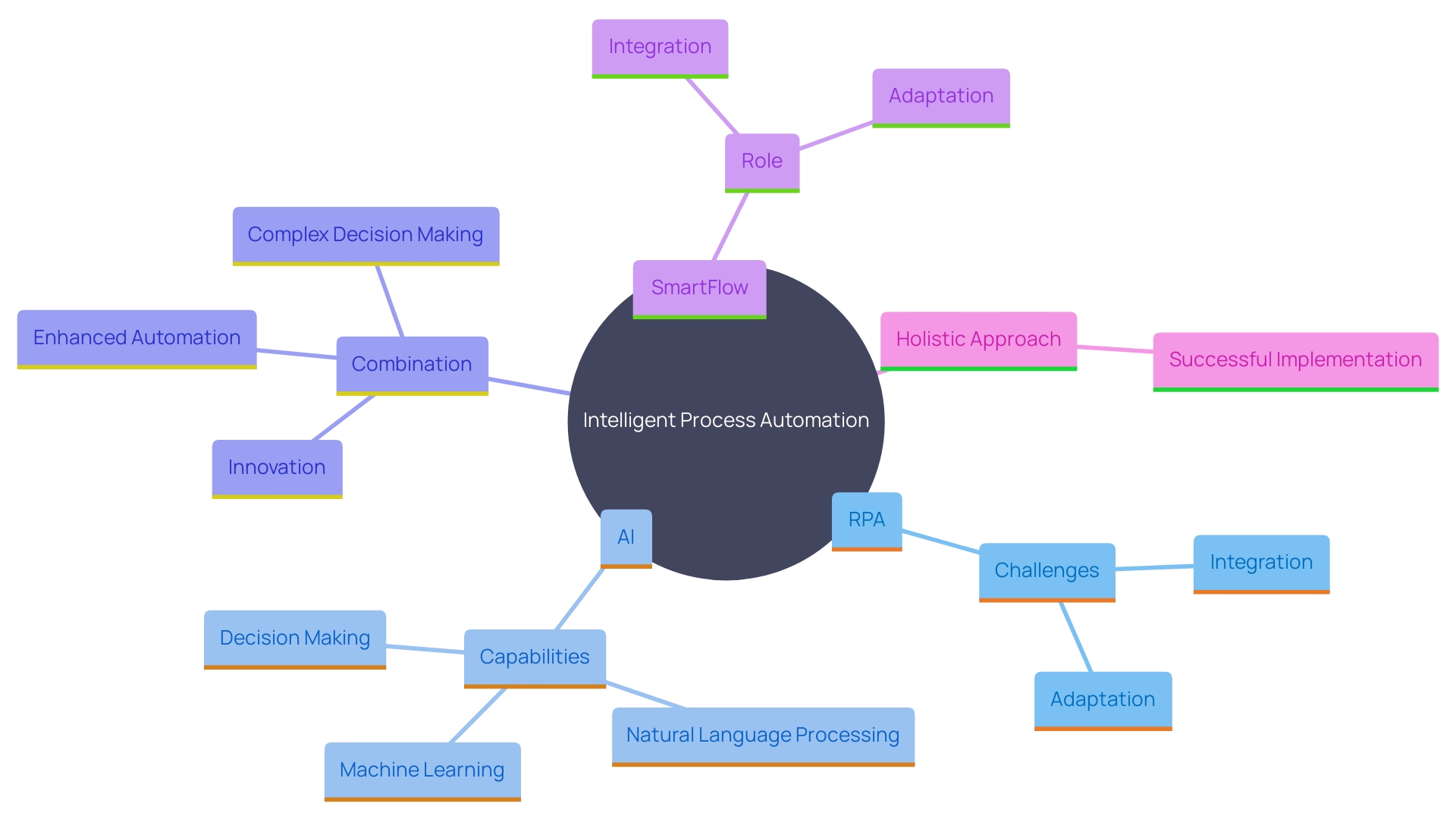
Conclusion
The transformative power of Robotic Process Automation (RPA) is evident across various industries, delivering substantial benefits such as increased operational efficiency, cost savings, and improved accuracy. By automating repetitive tasks, organizations can redirect human resources to more strategic initiatives, fostering innovation and enhancing employee engagement. The case studies of companies like St. James Winery and Capital One illustrate the tangible returns on investment achieved through RPA adoption, showcasing its potential to streamline processes and enhance productivity.
However, successful implementation of RPA is not without challenges. Resistance from employees, inadequate training, and the need for robust change management strategies can impede progress. Addressing these hurdles through upskilling, continuous monitoring, and fostering a culture of acceptance is essential.
Companies that invest in the right tools and provide adequate support can unlock the full potential of RPA, ensuring sustained improvements in efficiency and operational resilience.
Looking ahead, the future of RPA lies in its integration with Artificial Intelligence (AI) and Intelligent Process Automation (IPA). This evolution will enable organizations to tackle more complex tasks that require cognitive abilities, ultimately driving deeper insights and innovation. By embracing a holistic approach that combines RPA with advanced technologies, businesses position themselves for success in an ever-evolving landscape.
Organizations that prioritize thoughtful integration and strategic guidance can navigate the future of automation effectively, ensuring alignment with their broader business objectives.

